An Animal Of Extremes:
How Northern Elephant Seals Dodged Extinction
Among the countless stories of species disappearing into the mists of extinction, there are a handful of stories about species that nearly slipped away and miraculously (or tenaciously) managed to come back. The northern elephant seal is among this number.
The northern elephant seal is the one of the largest of the true seals, second only to the southern elephant seal. The females grow up to 10 feet long as weigh as much as 1,300 pounds. Meanwhile, males grow as long as 13 feet and can weigh an incredible 4,500 pounds. Much of their bulk is made up of blubber, the insulating layer of fat that keeps them warm during deep dives in frigid water. And it is this blubber that nearly sent the species into extinction.
Why Northern Elephant Seals Declined
In the early 1800s as whales became more scarce, hunters seeking sources of oil turned toward elephant seals. A single large bull could provide nearly 25 gallons of high quality oil, so they were an appealing alternative. It is unknown exactly how many elephant seals existed at the species’ peak but estimates are in the hundreds of thousands. When hunters aimed their harpoons at elephant seals, it didn’t take long to decimate those numbers. By the 1860s, over 250,000 had been killed. And by 1884, the species was declared extinct.
However, a tiny population of eight elephant seals was discovered just eight years later, hauled out on Guadalupe Island off of Baja California, Mexico. In a rush to have the last individuals of the species as specimens in their museum, a Smithsonian team killed seven of the eight seals. It seemed like the absolute end of the species. But somehow, a tiny population of somewhere between 100-1,000 elephant seals persisted, hidden from the sight of hunters (and museum collectors).
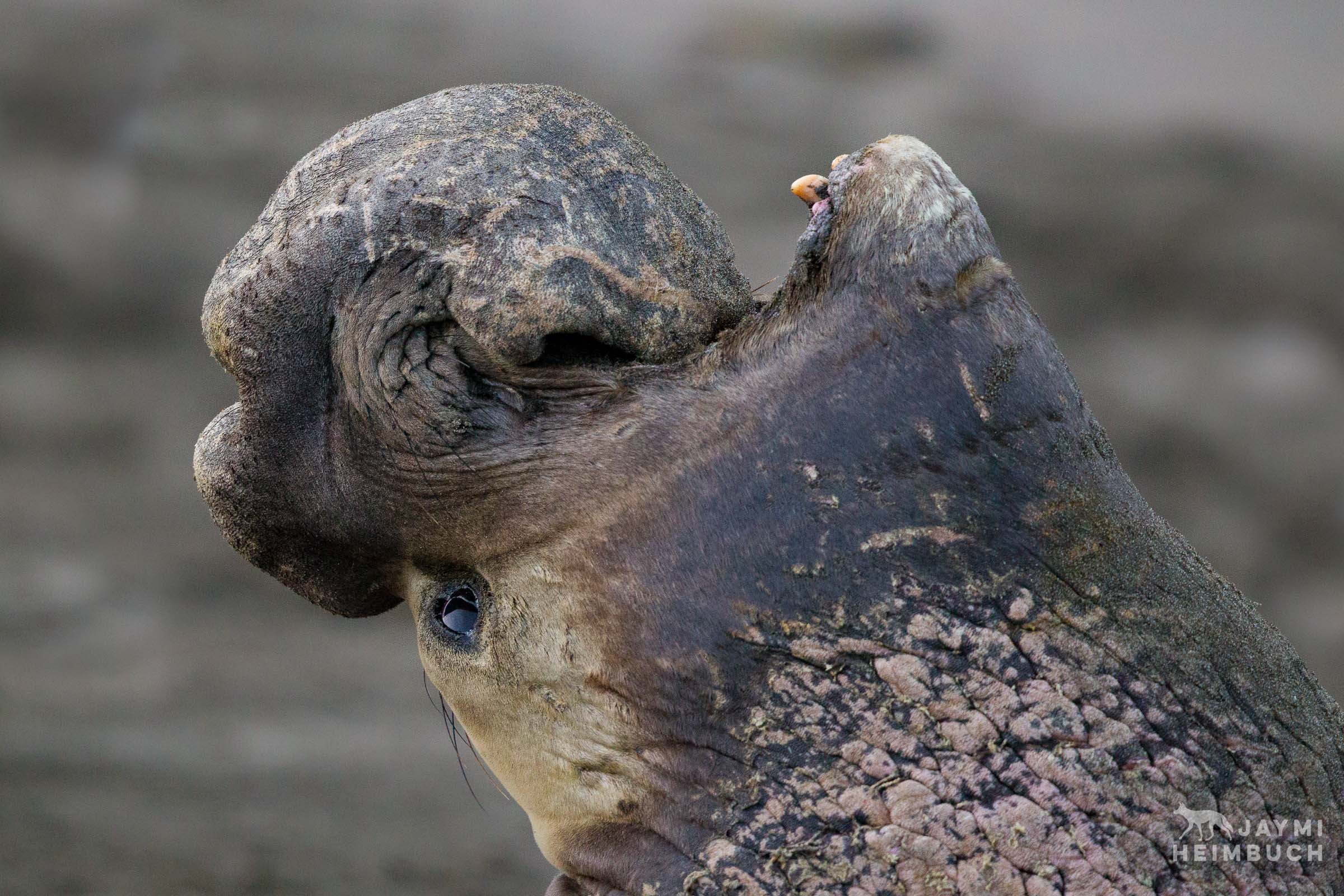
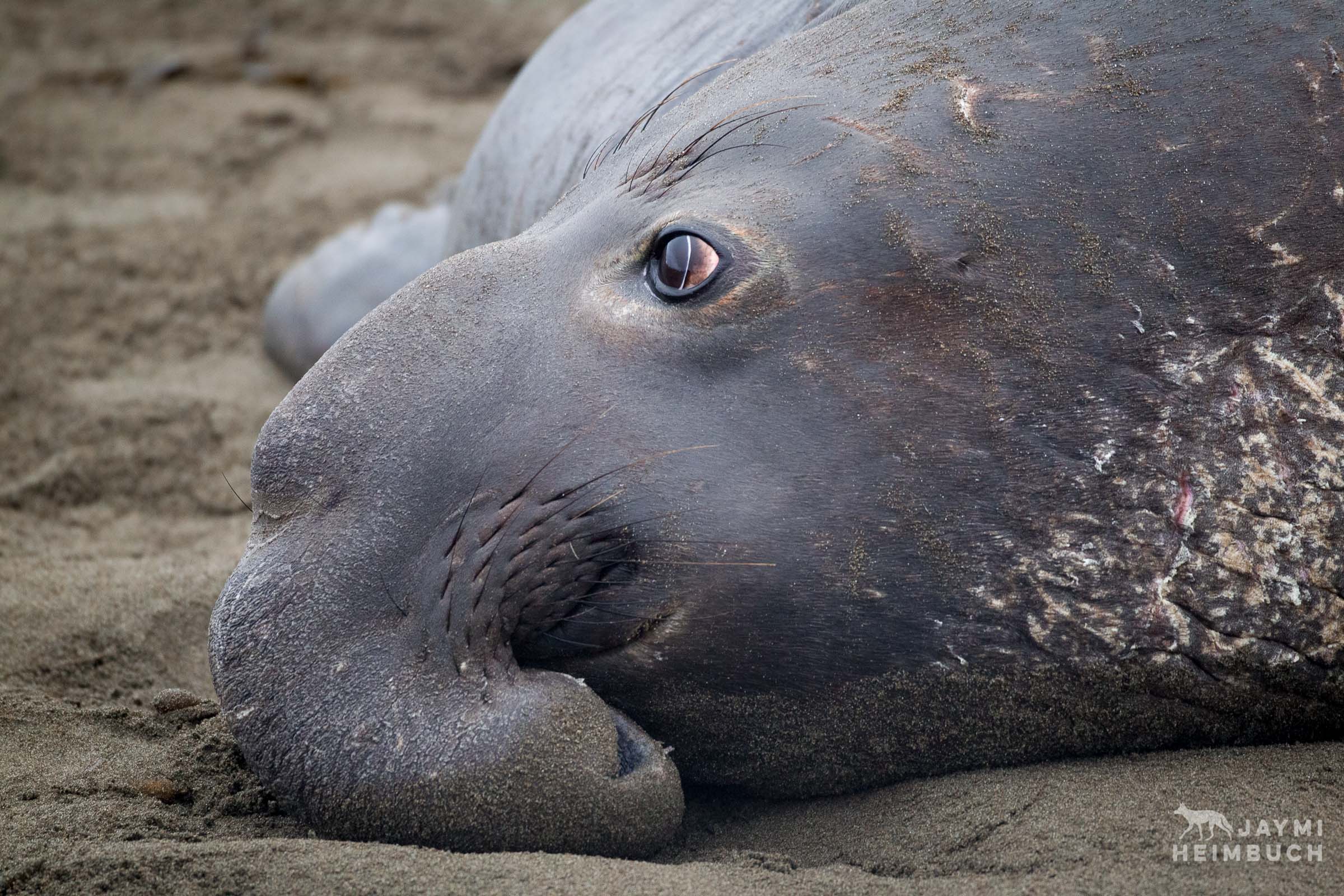
Northern Elephant Seals Return to California
Perhaps it is due to the fact that the seals spend the majority of their lives at sea and do not depend on hauling out on a regular basis, keeping them safe from humans for most of the year. Perhaps it is due to too few seals remaining for continued hunting even on a seasonal basis to be worthwhile. Whatever the reason, the last of the northern elephant seals refused to die out, returning to the rookery on Guadalupe Island each year for molting, breeding and pupping.
When it was known that some elephant seals still survived, Mexico granted the species official protection in 1922. The elephant seals began to recover and within a few years, individuals spread north onto beaches of the United States. The U.S. then followed Mexico’s lead and granted protections to the newly returned elephant seals. And so began the species’ recovery.
Sometimes, all a species needs to return to full health is for humans to quit killing them. That’s all northern elephant seals seemed to need, as the protections provided by the two countries helped them make a dramatic come-back.
By 1955, the first northern elephant seal was documented at Año Nuevo State Park, south of San Francisco, and the first pup was born there in 1961.
Within decades, the area became one of the largest breeding grounds for elephant seals with thousands of pups born there annually.
California’s northern elephant seal population continues to grow and has even spread to areas that were not historical colony locations, perhaps finding new mainland beaches because they no longer face predation by grizzly bears or humans.
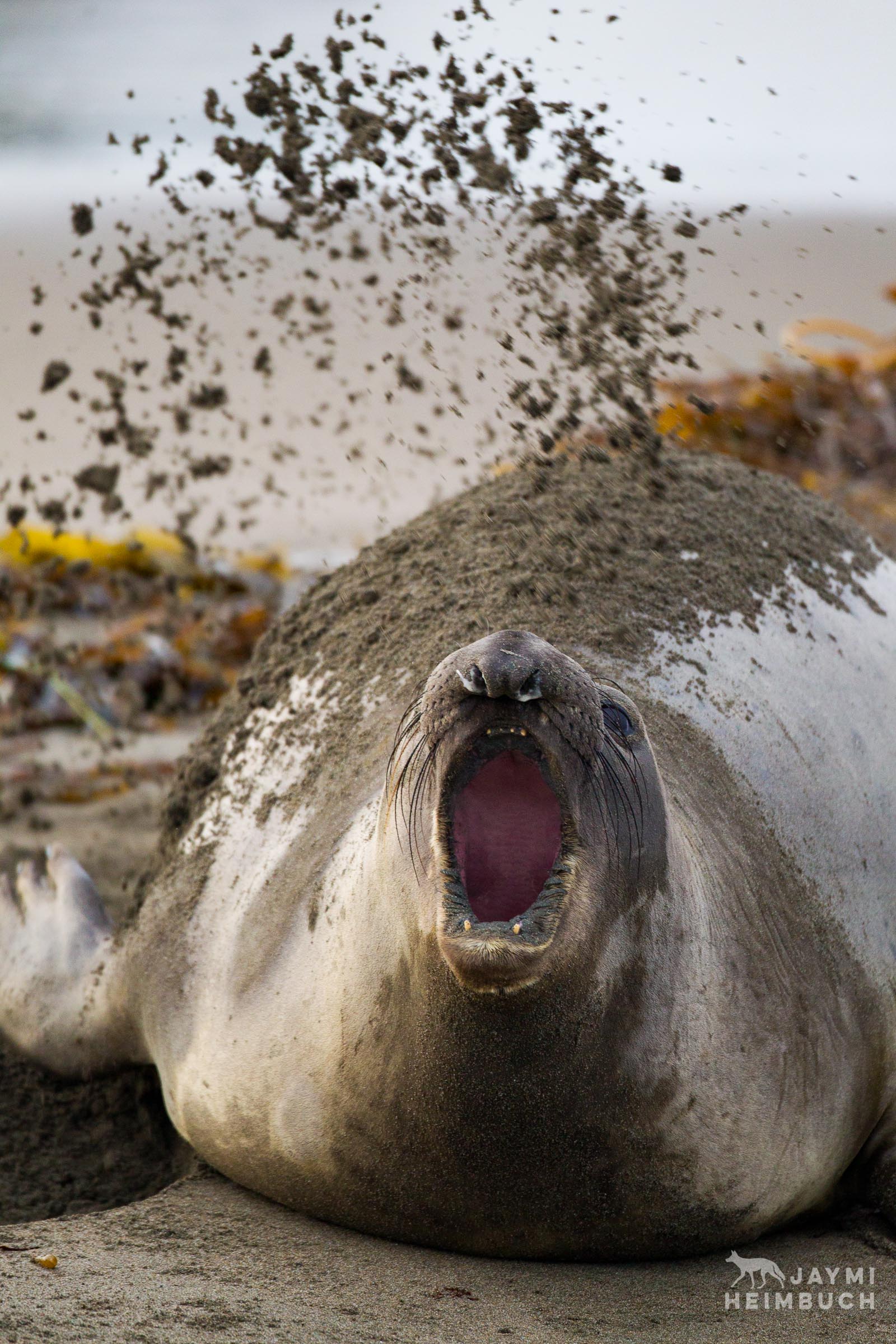
From Endangered to Thriving… But Still Protected
Today, there are somewhere between 120,000-150,000 elephant seals — a number likely close to their historic population. They have long since been removed from the endangered species list, though they are still protected in the U.S. by the Marine Mammal Protection Act. However, being reduced to such a minuscule breeding population a century ago caused problems for the species that persist today.
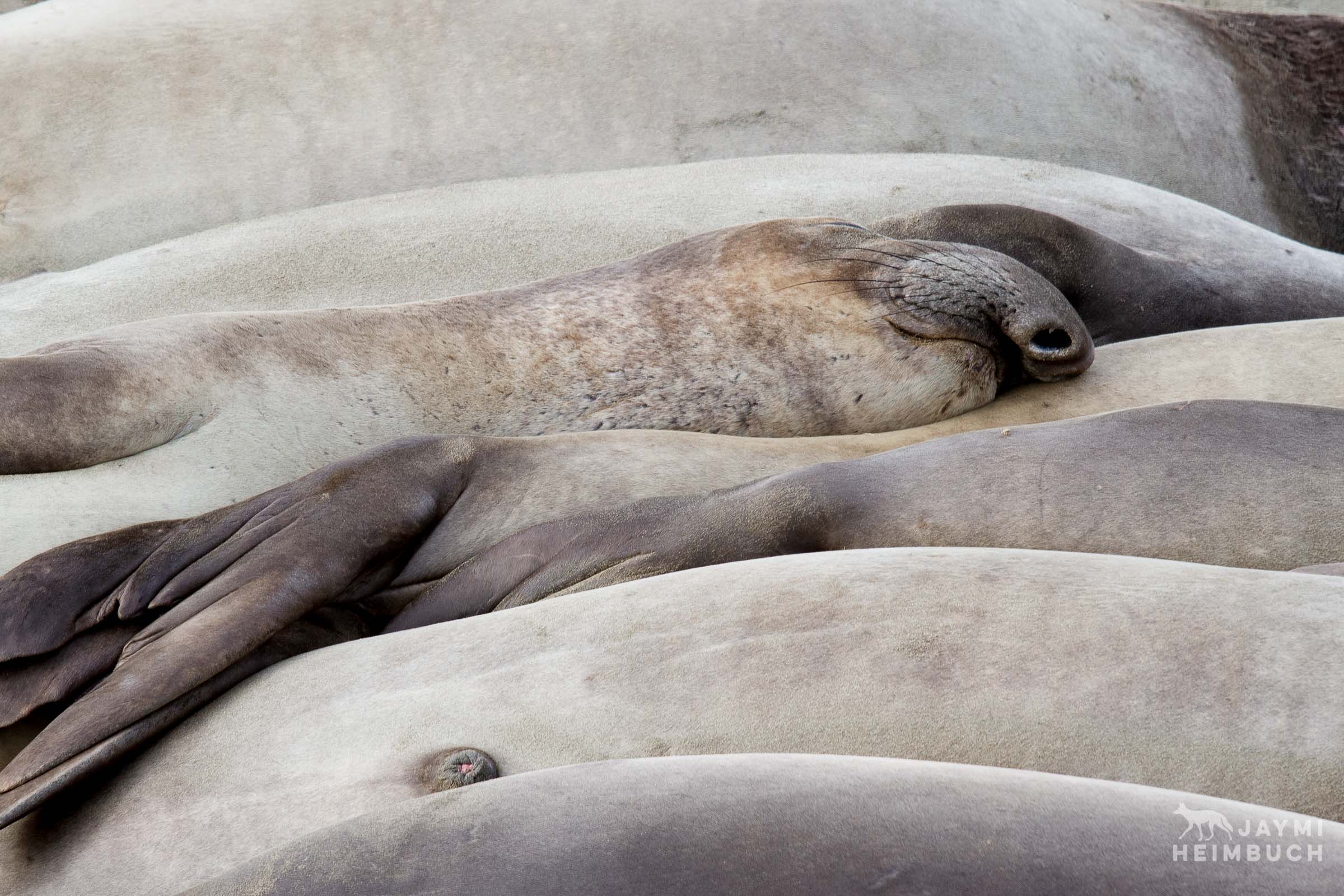
The genetic bottleneck has made northern elephant seals more susceptible to certain diseases, including skin disease and lungworm among others. The biggest challenges they face today include disease, pollution and marine debris, extreme winter storms and loss of beach front habitat due to climate change, and of course the challenge of finding food in an over-fished sea.
Even so, they are here. Thankfully, they are a thriving species once again. And what a miracle of evolution elephant seals are. The species is one of the most extraordinary mammals on the planet.
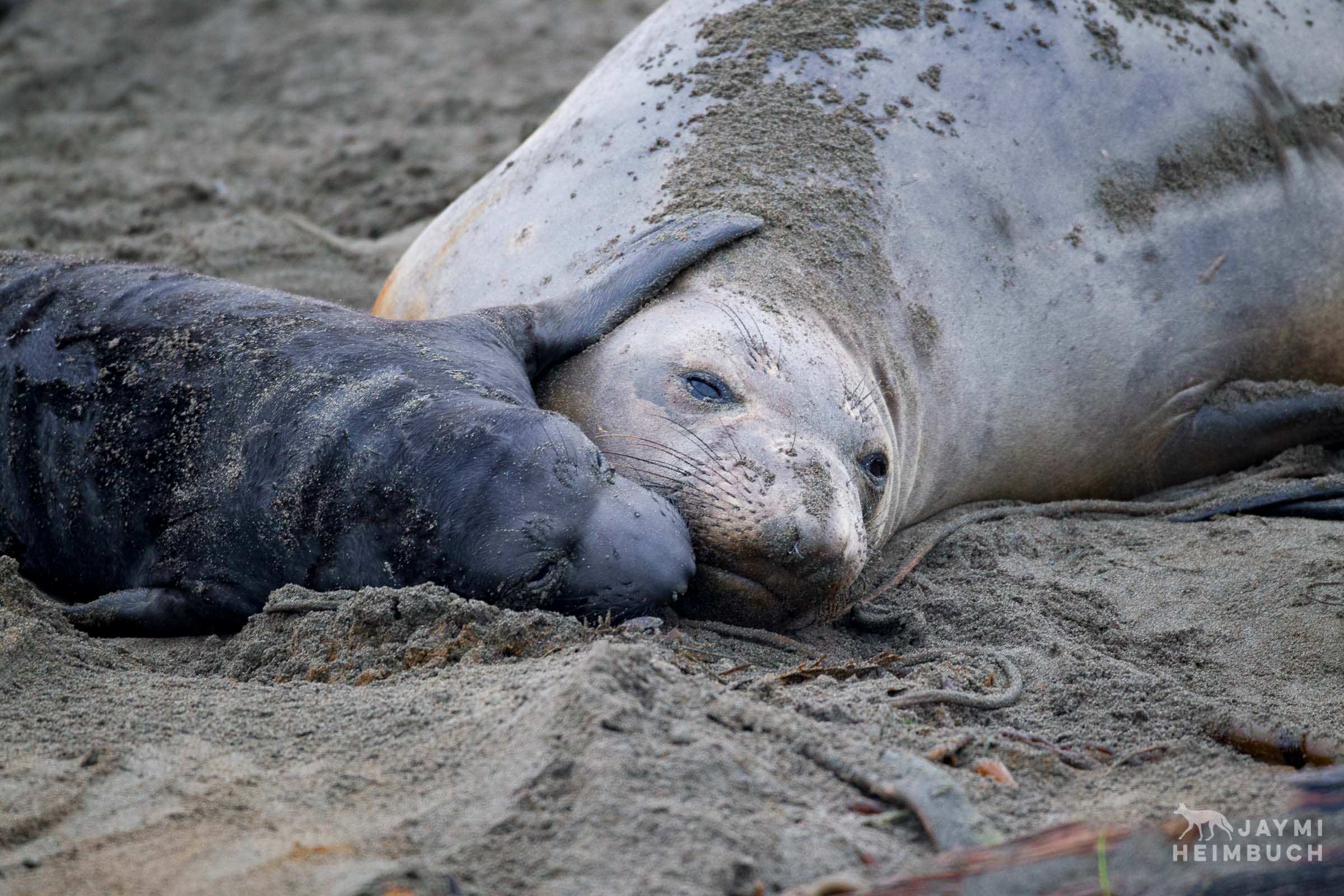
The Amazing Diving Abilities of Northern Elephant Seals
Elephant seals spend as much as 80 percent of their lives at sea. Of that time at sea, as much as 90 percent is spent underwater in deep dives. Day after day, month after month, elephant seals dive, come up for a couple minutes to take a breath of air at the surface, then dive again. One researcher tracked a female northern elephant seal for 34 days and found that she dove almost continuously, staying at the surface for only three or four minutes to rest. Some researchers believe that elephant seals nap on their glides down to the depths where they hunt — and they would have plenty of time as the depths are extreme.
Northern elephant seals dive as deep as 5,000 feet to hunt, with the deepest dive recorded at 5,788 feet, well over a mile below the ocean’s surface. Their dives can last as long as two hours. However, this is on the far end of their dives. Males typically dive 1,150-2,600 feet with a dive duration of 21 minutes, while females swim to 1,000-1,950 feet with an average dive duration of 17 minutes. For comparison, harbor seals dive only as deep as 650 feet, and the deepest dives for walruses is a mere 260 feet.
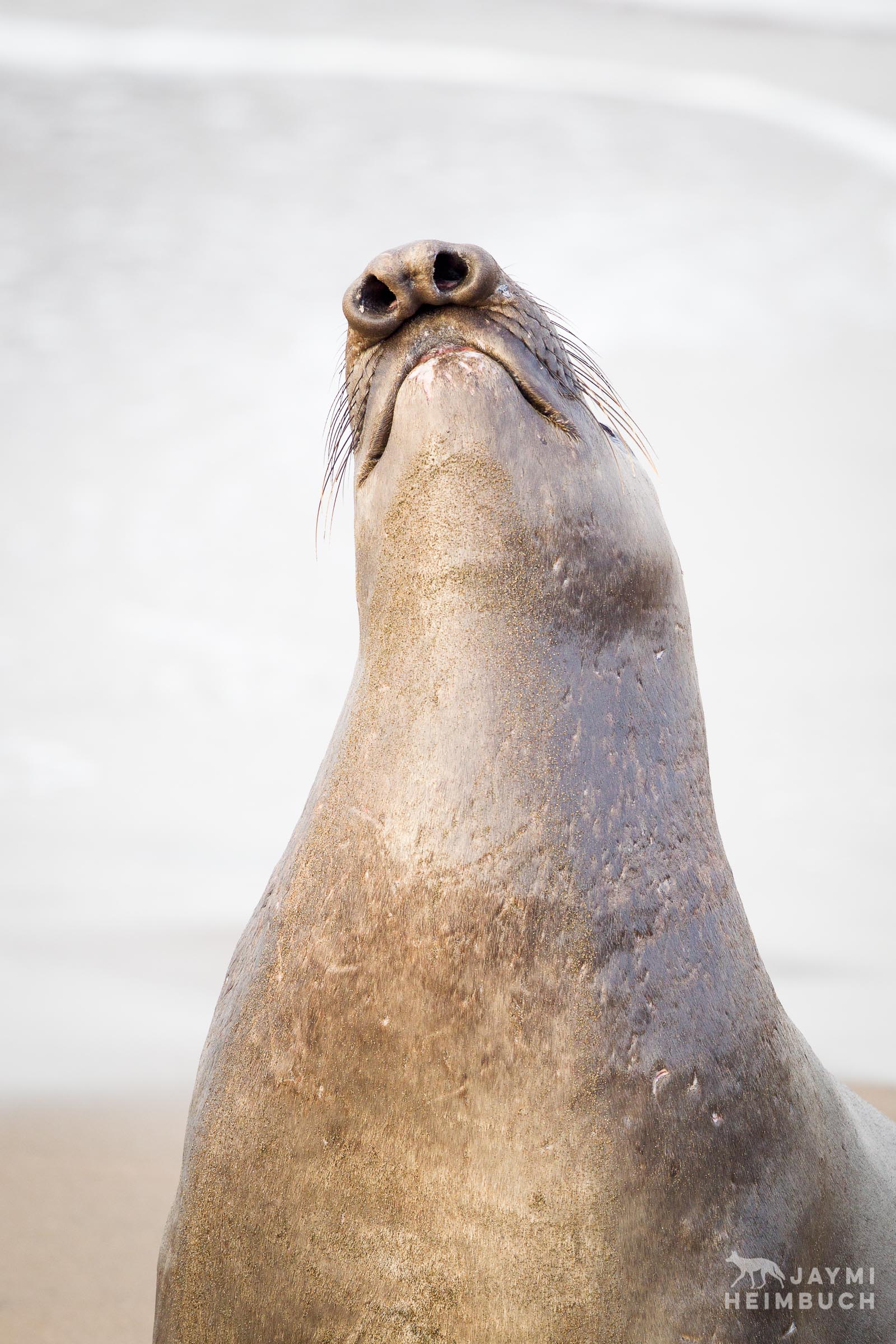
The elephant seal has special adaptations allowing it to reach such depths, including a large amount of blood with a larger proportion of oxygen-carrying red-blood cells, as well as areas in its abdomen that can hold blood during dives. Oxygen is stored in the blood rather than the lungs, and elephant seals actually exhale before diving. This allows the body to compress as the weight of thousands of feet of water presses in from all sides. The elephant seal also slows its heart rate as it dives. Though on land its heart may beat anywhere form 55 to 120 times a minute, when it dives, its heart slows to an amazing 4 to 15 beats per minute. Blood flow is reigned in, with less going to its extremities so more can go to the brain and vital organs. All of this and more allows the seal to be one of the most extraordinary divers of all mammal species.
Another noticeable trait in the elephant seal is their namesake nose, that elongated proboscis. It is particularly pronounced in males, whose noses grow to about eight inches past their lower lips. This adaptation allows the males to make exceptionally loud roaring sounds, and when it comes to vying for territory and females on a beach, the louder the better.
However, there is a second purpose for elephant seal noses, both for males and females. It acts as a sort of “rebreather,” absorbing moisture from exhalations which then helps minimize how dehydrated a seal gets while hauled out for months during the breeding season.
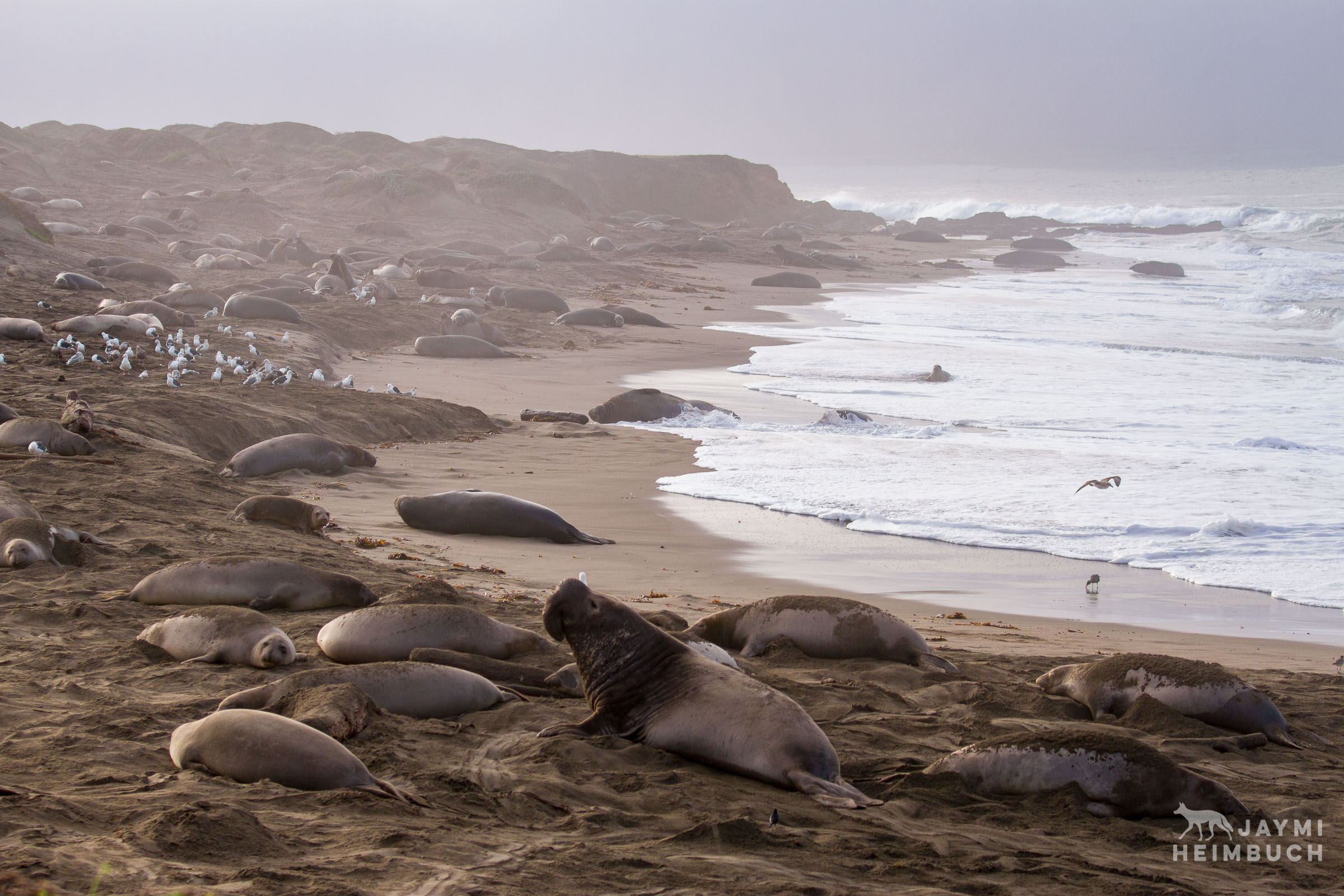
When You Can See Northern Elephant Seals on Beaches
The elephant seal is the only mammal that has two annual migrations, and is the only mammal to travel over such long distances, clocking in between 11,000-13,000 miles annually. The seals come to shore once during the summer for their catastrophic molt, when they shed their old coat all at once. The second migration occurs in the winter for birthing and breeding. It is during this migration that they draw the most attention from human onlookers, who enjoy both the incredible sight of huge males clashing in the surf and the sigh-inducing cuteness of the newborns.
Each December, males begin arriving on beaches and sparring for their section of the beach, and thus breeding rights to any of the females that come ashore in their area of the beach. Males are equipped both with size and with a thick layer of pink keratinized skin around their chest which protects them from the bites and blows delivered during fights — and it is appropriately called a “chest shield.”
As territory is established, males maintain their hierarchy through stares, roars, charging at encroaching males, and of course through often bloody but rarely lethal clashes.
Northern elephant seals are born with a black coat. They become more of the signature sausage shape as they nurse on their mother’s fat-rich milk, and eventually when they are weaned, they lose their dark coat of thick fur and have a silver-colored sleek coat.

From the moment males arrive from their months at sea, their primary goal is to claim a section of beach — and therefore mating privileges with all the females in that section — and to hold that territory against any other competing males.

Much of the time, males can warn off other males by posturing and vocalizing. But when two males of similar size and status come together, a physical clash usually happens.
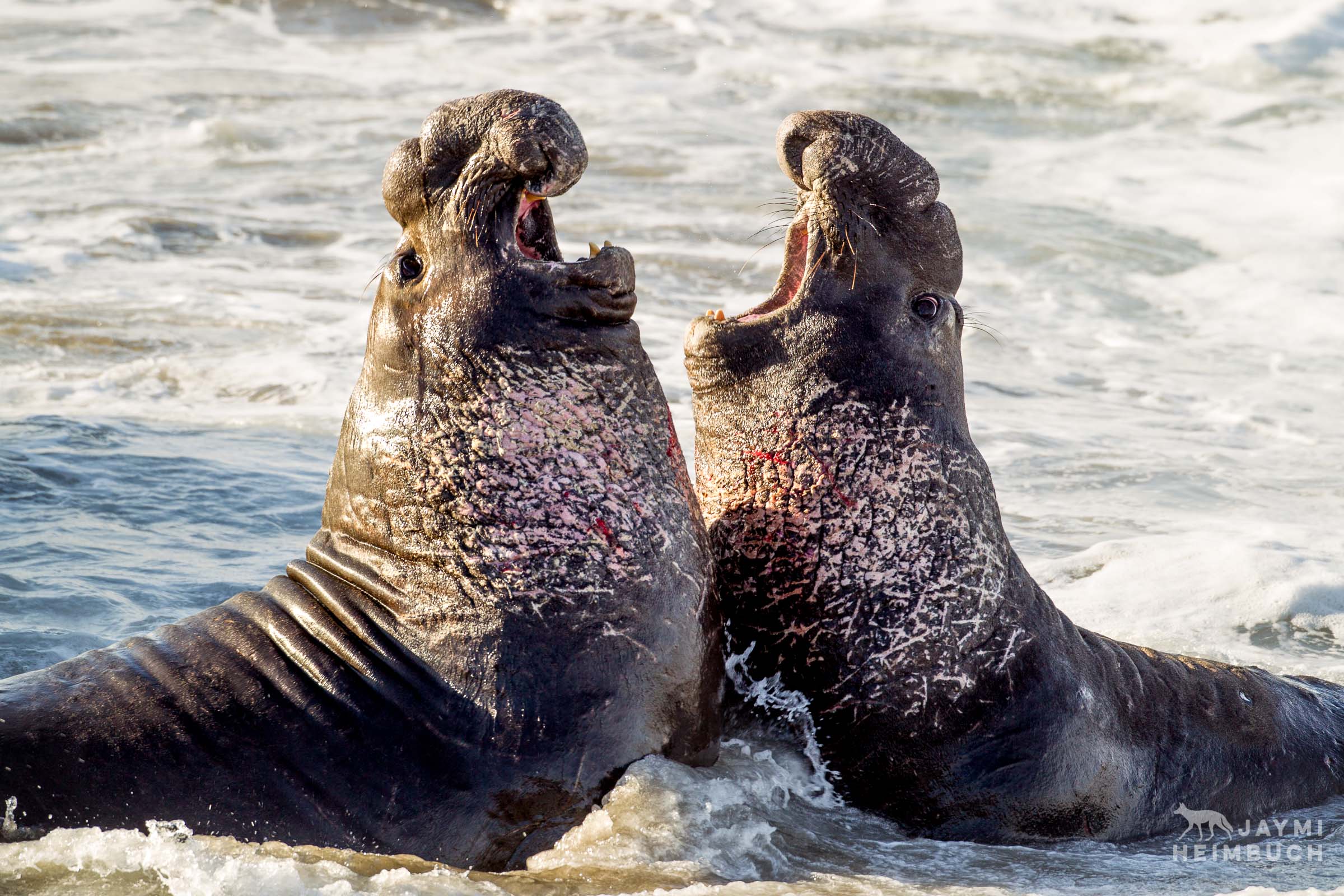
After what is typically a short fight, one of the males beats a retreat. He may try his luck farther down the beach against another, hopefully smaller rival.
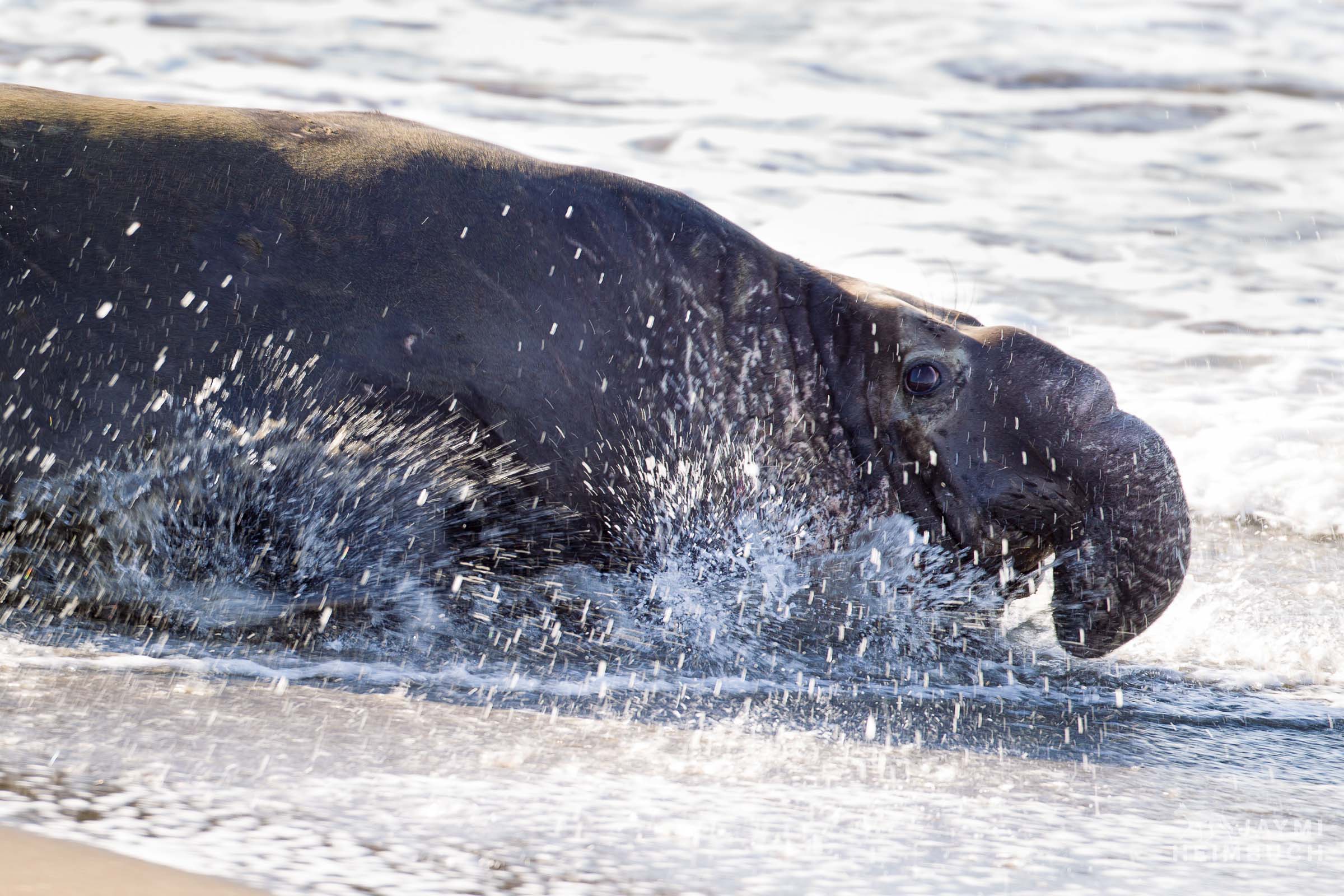
The “beach masters” are males who have hit their prime in size and fighting prowess, usually between 9 and 12 years of age. younger males may avoid a fight by sneaking in to mate with females while the dominant male is distracted with defending his turf.
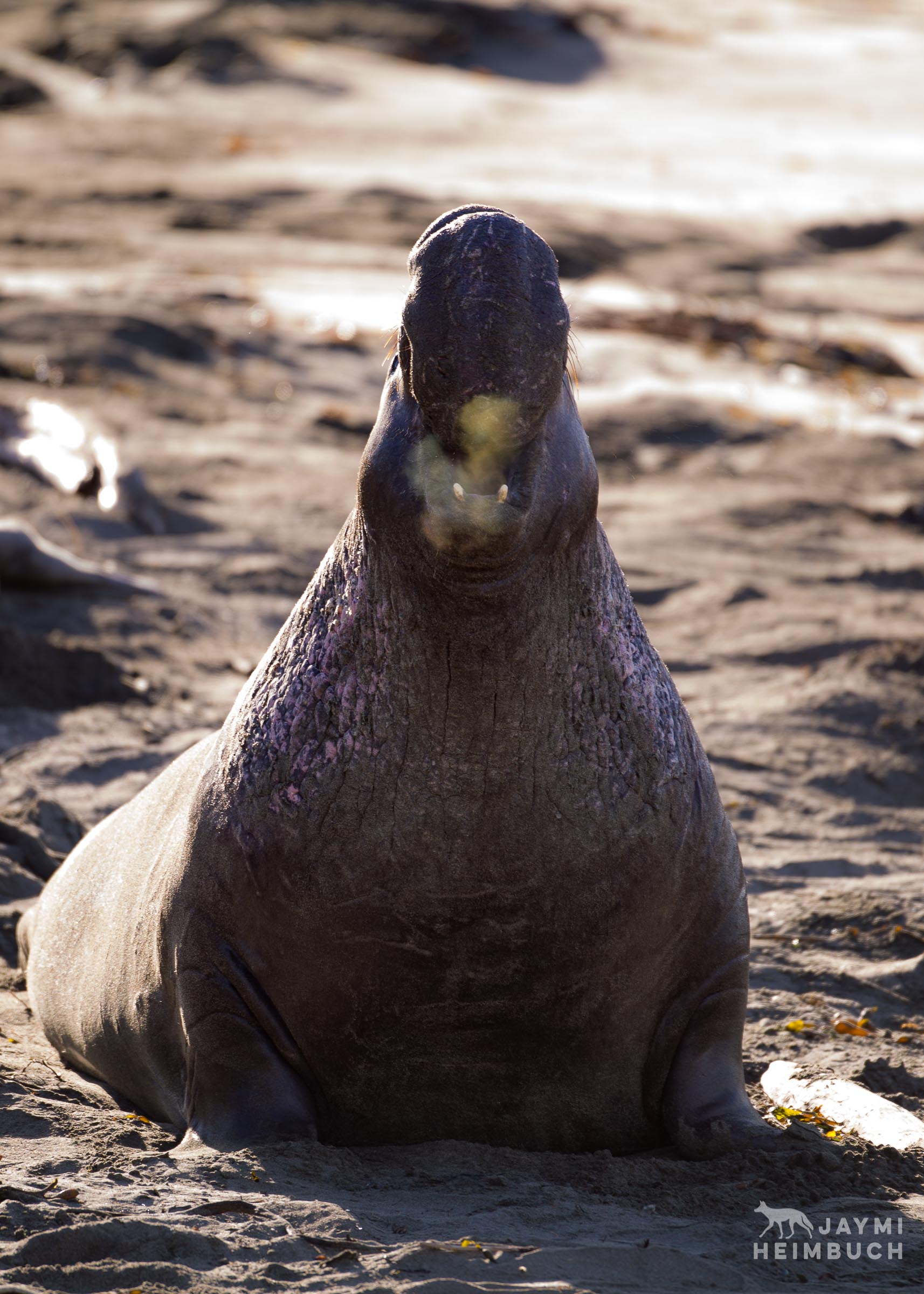
Males aren’t sexually mature until they are about 4-6 years old, but spend the first part of those years figuring out how to earn and keep a spot on the beach. They hit their prime between 9 and 12 years of age, and typically only live until around 15-17 years old if lucky. With a life of such extremes and so much fighting every season, they certainly end up looking worse for the wear.
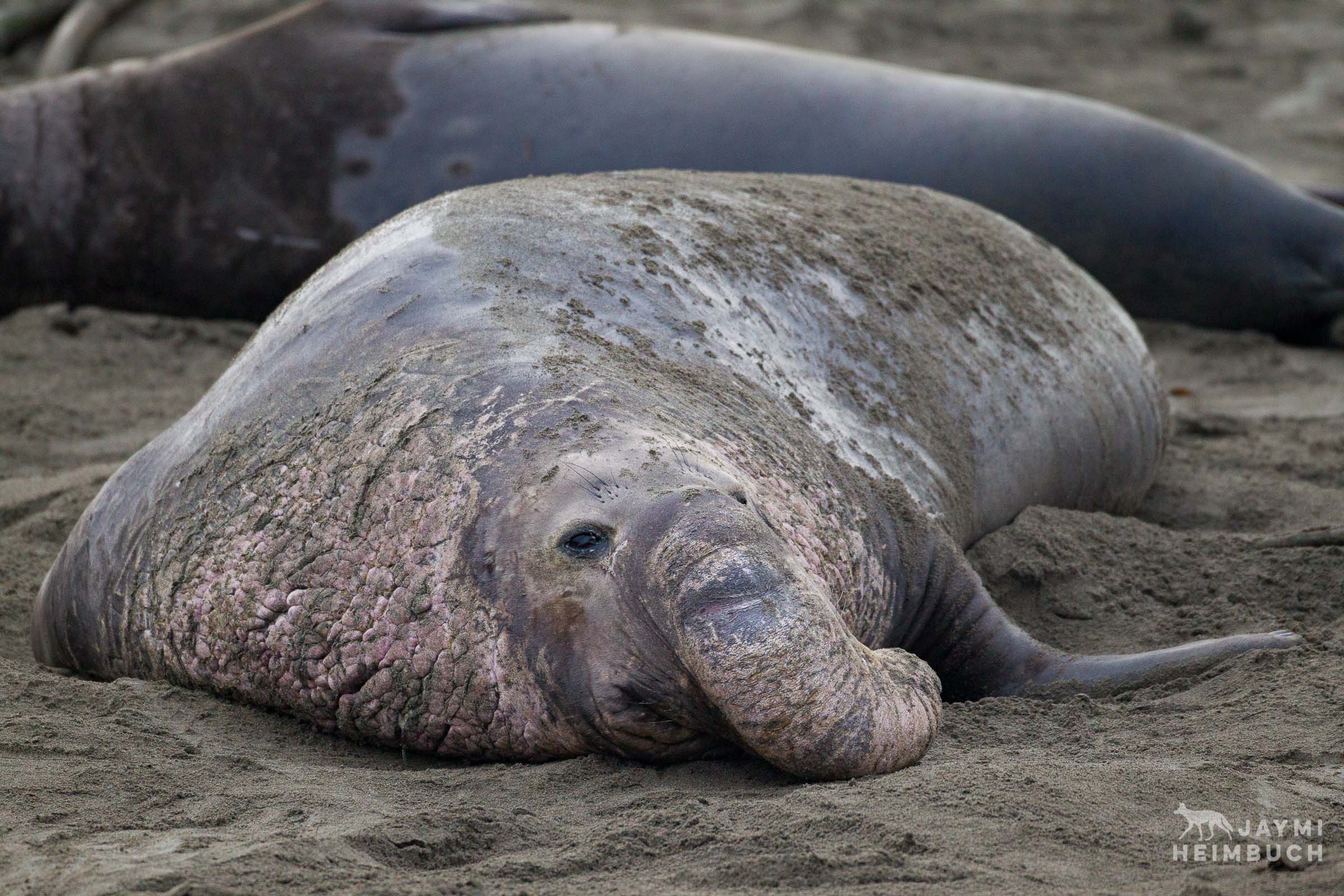
Shortly after the males arrive on the beaches, the females arrive. Within two to seven days after coming ashore, they give birth to a four-foot-long, 75-pound pup coated in black fur.
An onlooker can tell when a female is about to give birth in part because the female becomes agitated, roaring and tossing sand with her flippers. But another clue is watching what the gulls are doing. The gulls have a sense about when a birth is eminent and begin to gather around the female — not to act as comforting midwives but to be in a good spot for feasting on the placenta.
Once the birth begins, it moves quickly, lasting only a few minutes. Afterward, the mother turns to get to know the baby she’s been carrying for the last year, and the gulls begin their clean-up duty.
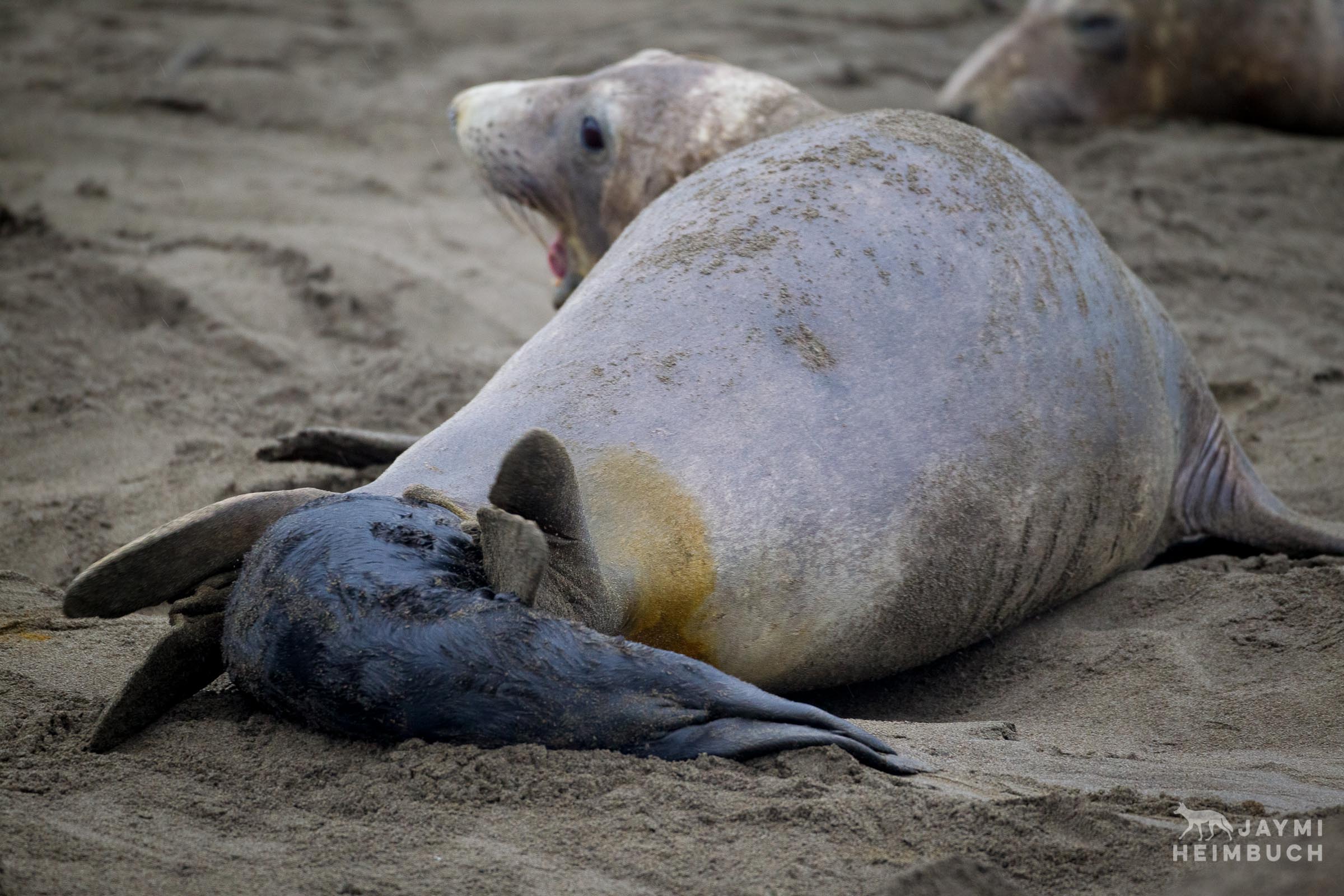

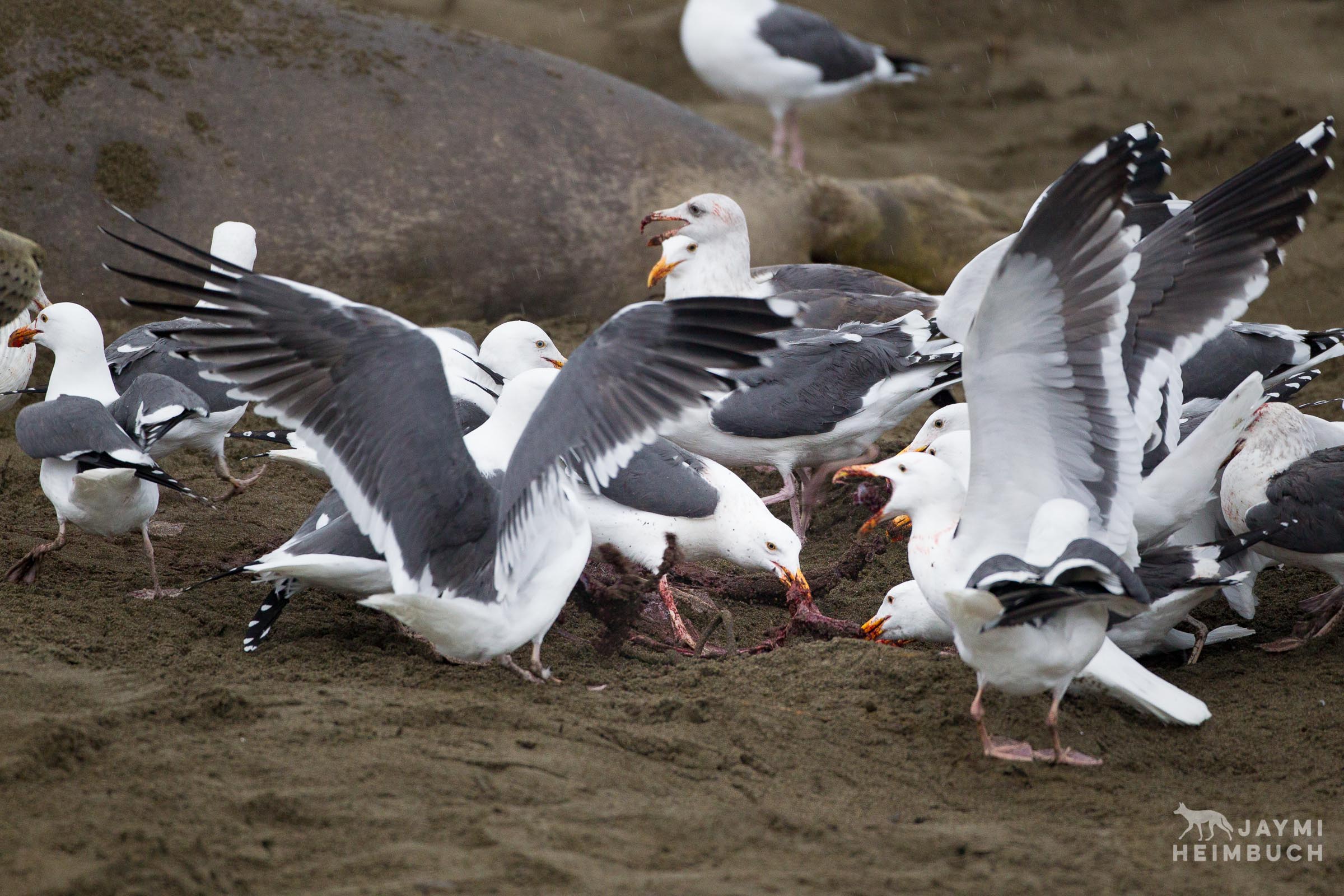
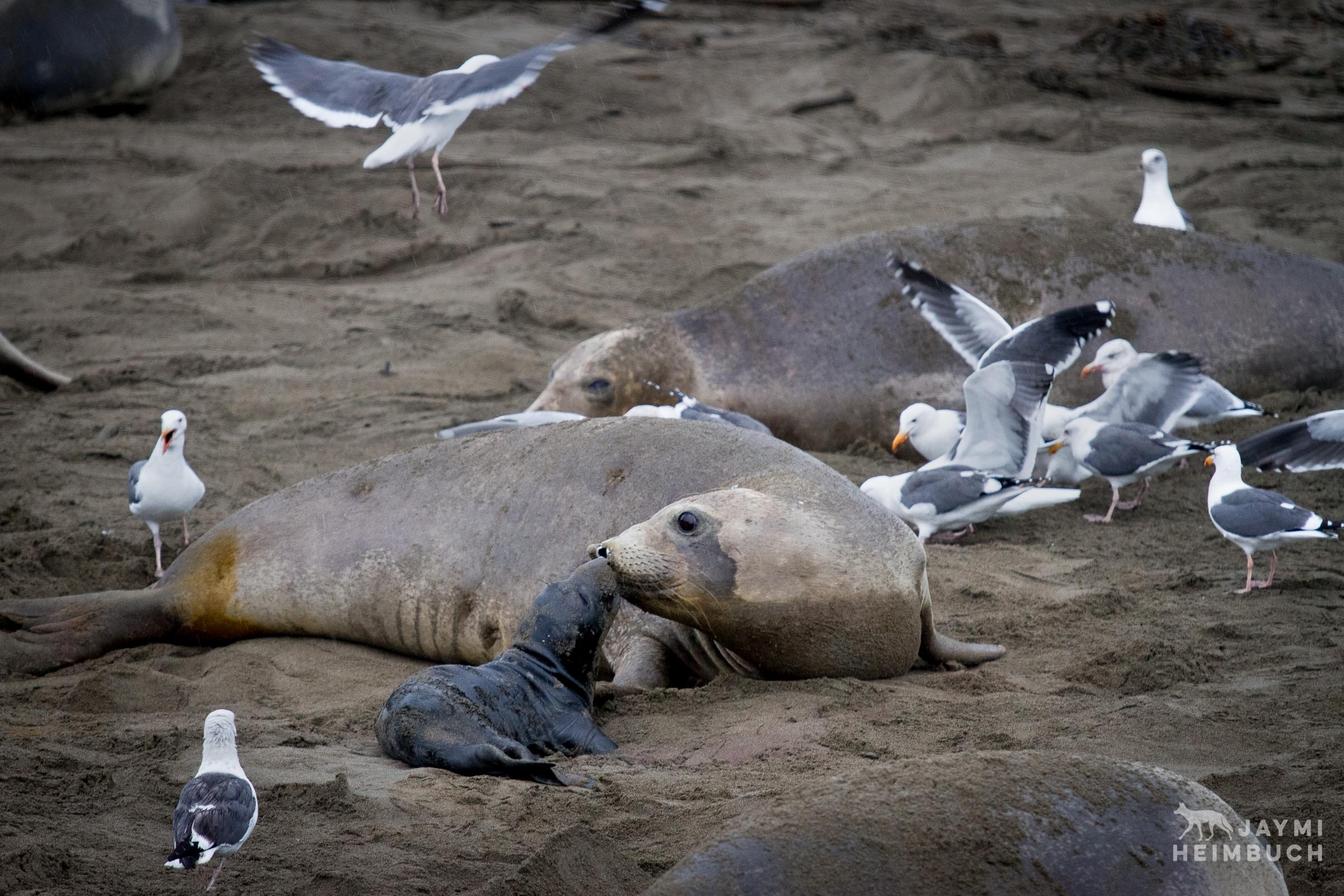
The fat-rich milk of the female allows the pup to grow by 10 pounds a day. By the time they are weaned, pups weigh around 300 pounds. They need all the weight they can get because they are weaned when they are only about one month old, and have to rely on their stores of blubber for the two months they spend learning to swim and feed before heading out to sea to begin their life of adventure. Meanwhile, the females mate within a few days of weaning their pups and then return to the ocean.
During the short breeding season, life on the beach is filled with constant activity. Large males are busy clashing while females are busy nursing their pups and protecting them from the constant crush of other seals, and meanwhile fending off overly amorous young males that try to sneak in under the radar of the beach masters. There is a constant shuffle of seals jostling for room, the cries of young pups hungry for more milk or who perhaps lost their mothers, the roar of seals vying for some personal space, and there is also the constant tussling of young juveniles play-fighting with each other, honing their strategies for when they need to fight for real as a matter of passing on their genes.
Within minutes after giving birth, this female had to warn off an overly-amorous young male. It is this kind of character that is chased off by the dominant male as soon as he notices the interloper.
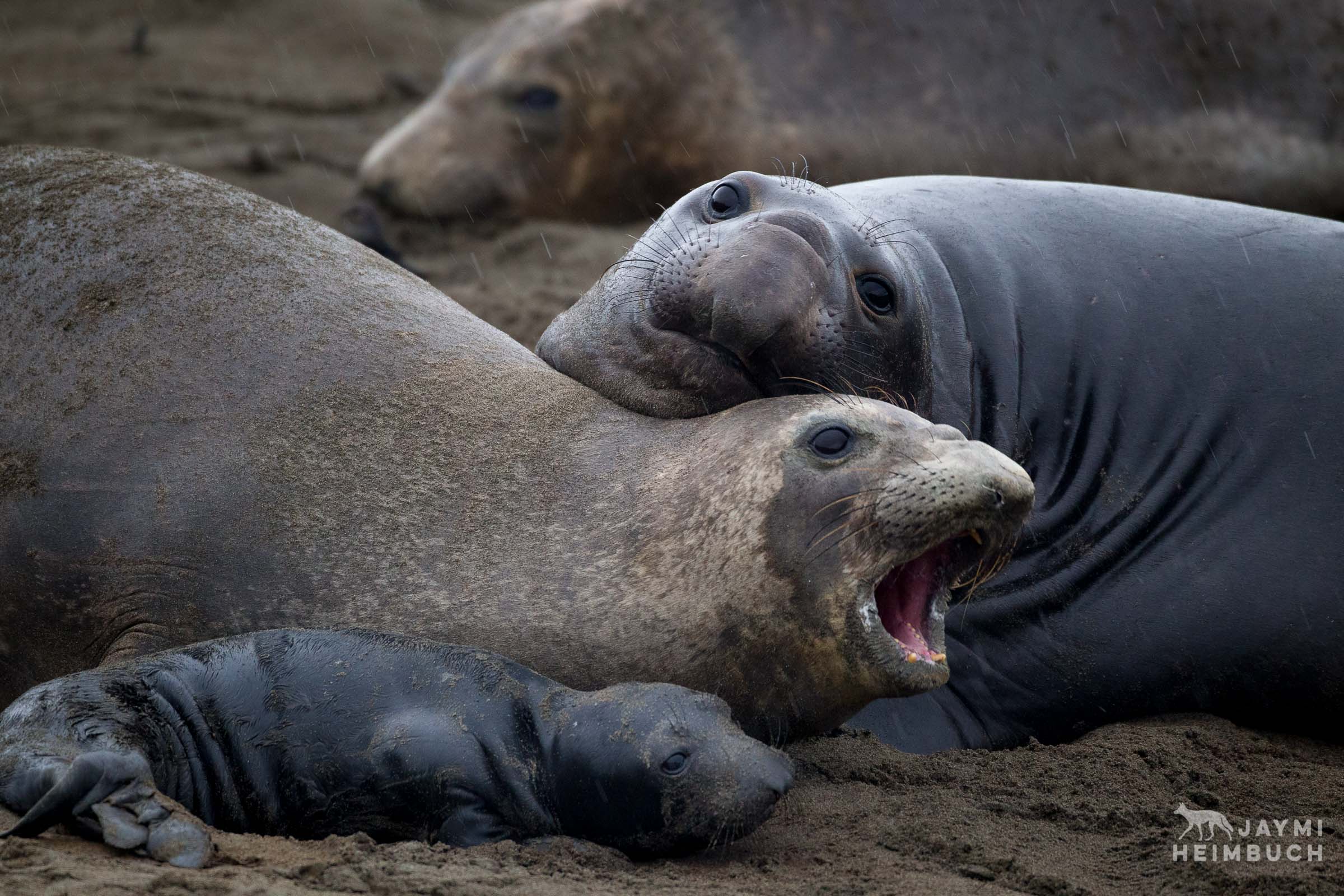
Northern elephant seal pups and mothers recognize each other through both scent and vocalizations. This allows a mother and pup who are separated during upheaval on the beach such as a storm, rogue waves, or through seals rushing to get out of the way during a territorial dispute between large males.
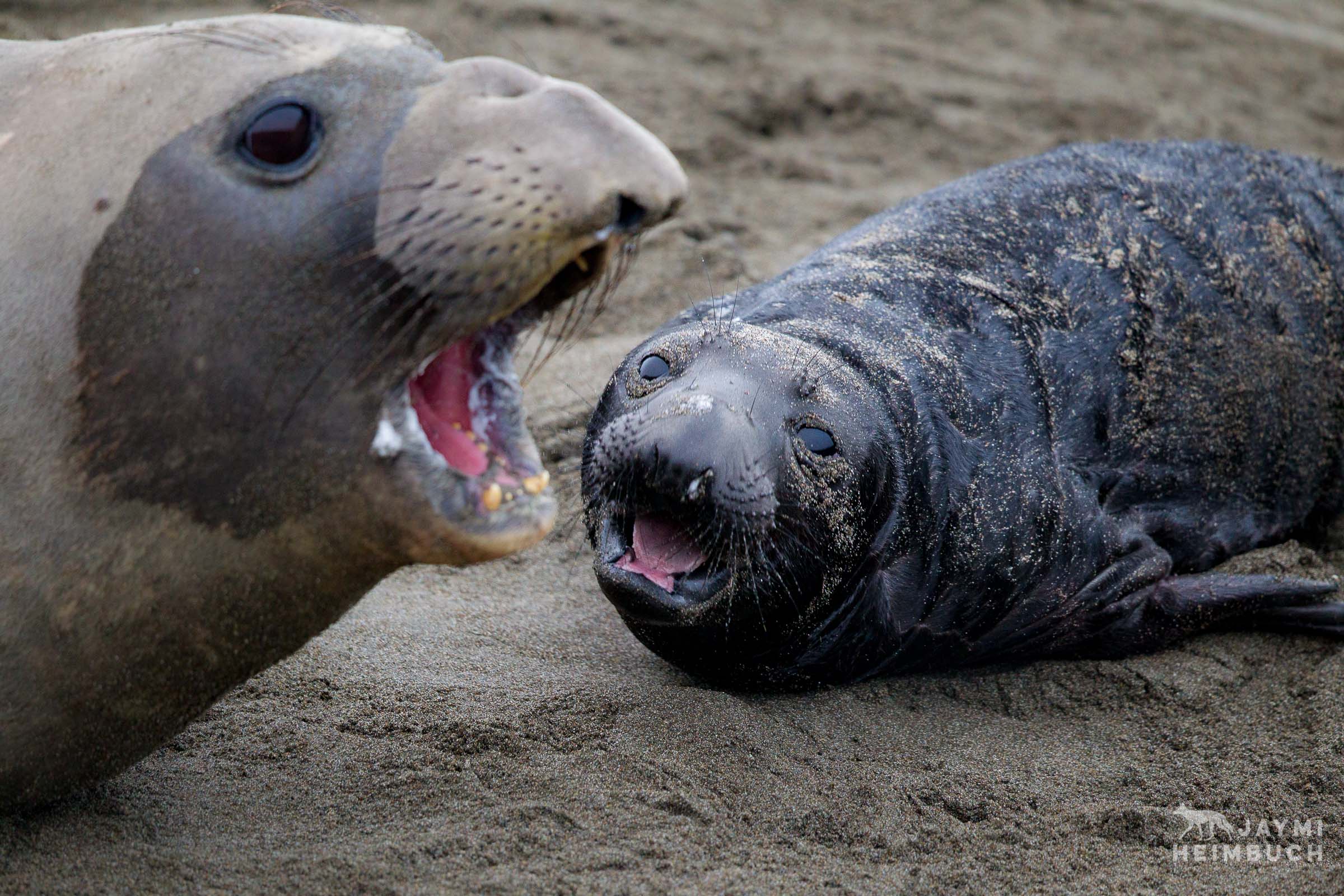
There is always someone making noise on the beach in an elephant seal rookery. pups call for moms, moms warn away other seals, males warn away other males. They aren’t exactly the most quiet of species.
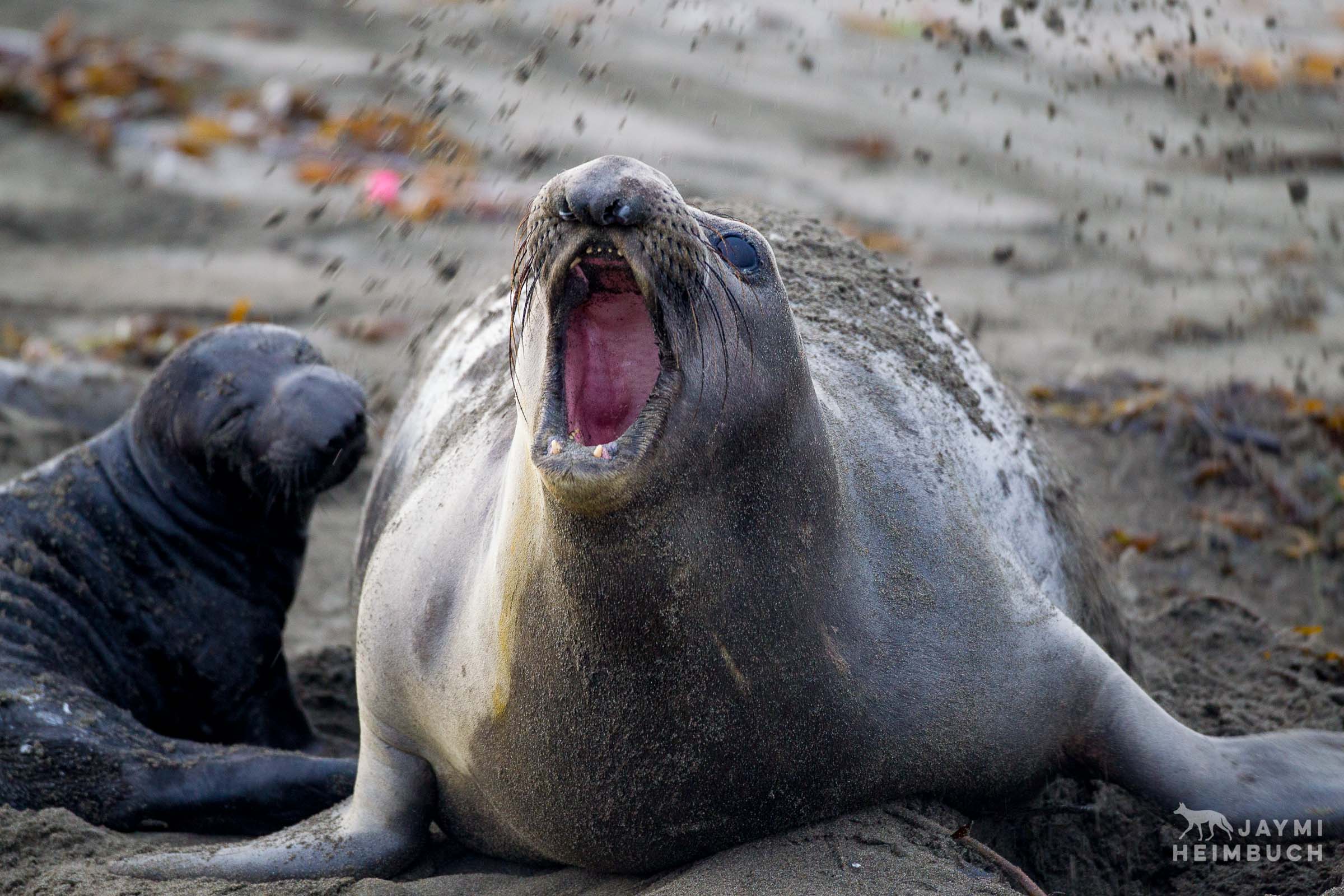
Juvenile males play-fight and learn strategies for when they get older. Mostly it consists of just leaning on each other and seeing who can be the tallest of the two.
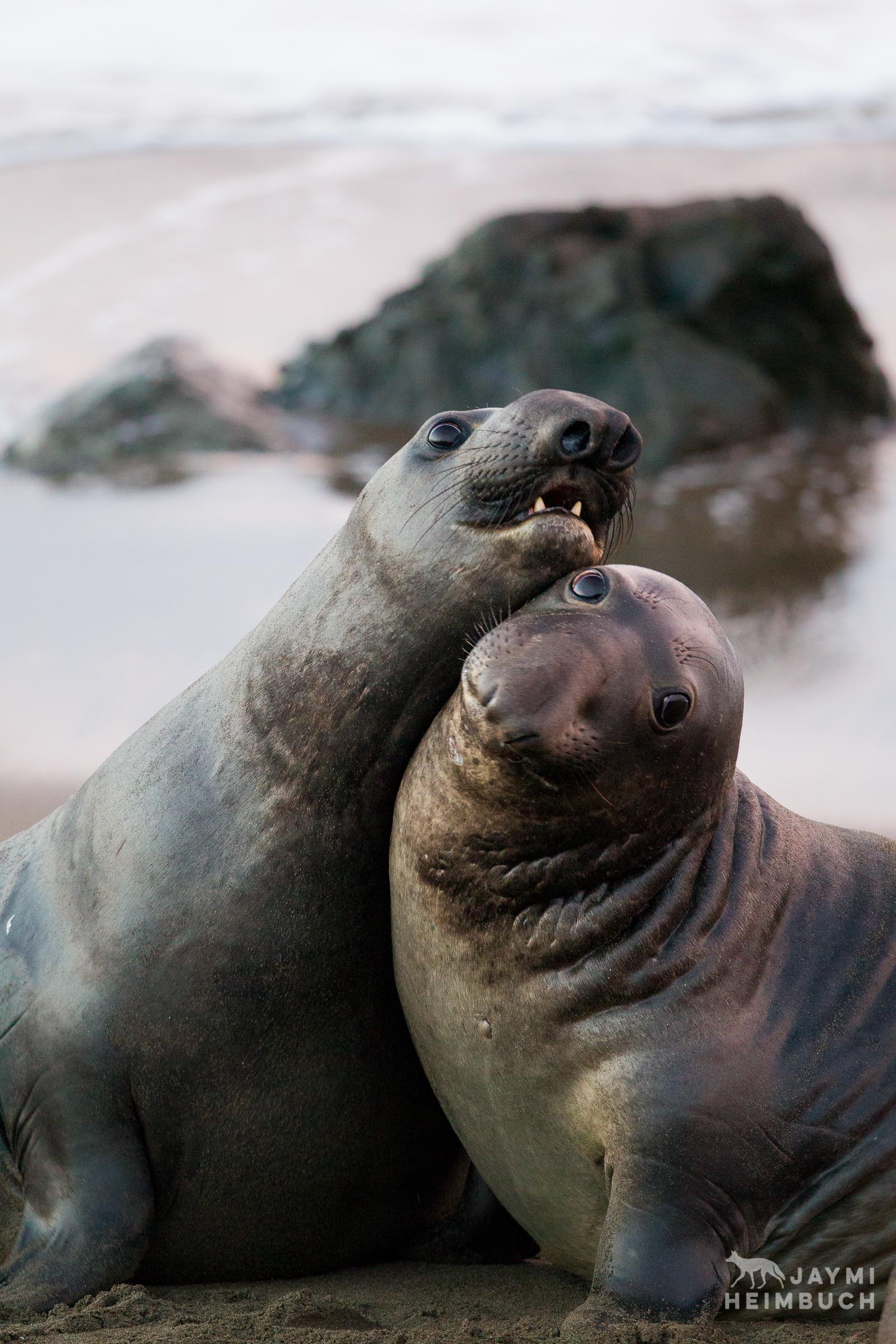
As juvenile males get older, the play-fighting gets more serious, with real competition sparking up between well-matched pairs.
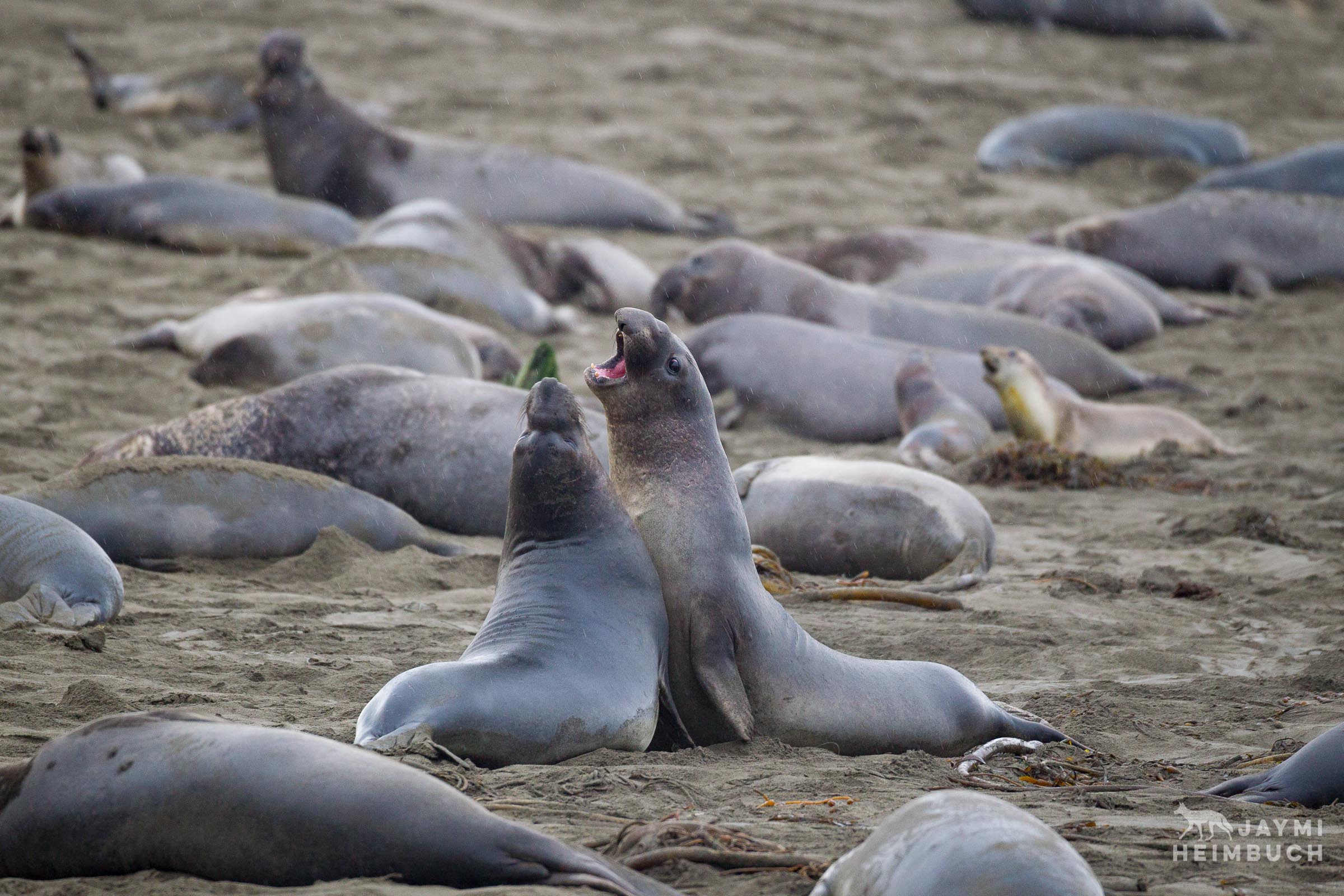
When I stand along the edge of the beach watching the commotion that is breeding season, watching the constant drama of life and death at work for this species, sometimes I find myself in anxious awe that this scene was a knife’s edge away from not existing, from being erased from the planet and human memory entirely. The near-extinction of northern elephant seals is frightening to think about — how very close we came to it!
The story of northern elephant seal is a lesson for us humans, as we seem so intent on wiping out other species that are too useful to us, or too useless, or too in the way, or too invisible. We have an abundance of stories about species that only our grandparents or parents can remember seeing, and are no more. We have a dearth of stories about realizing a species is so close to the edge, and figuring out what to do to keep them here with us, to bring them back to abundance so that we and our children can look upon them with amazement, and so that the species can continue fulfilling its long-evolved niche in the ecosystem.
Bald eagles and condors, humpback whales and sea otters… these are conservation success stories we must take note of and set as the bar, stories where we recognized our role in their disappearance and reversed it. Let’s not see wolves, elephants, lions, sharks and so many other species we know full well that we are responsible for destroying disappear forever. Let us instead recognize how capable we are of standing back, seeing the long-term value and importance of species living out their roles in nature, and altering our behavior so that species can persist.
There is so much wonder in the world; let’s spend our time being amazed at it, rather than missing what we’ve lost.
Here is a fantastic video from National Geographic that explores the natural history of the northern elephant seal. Enjoy!
Originally published January 2015
[mashshare]

